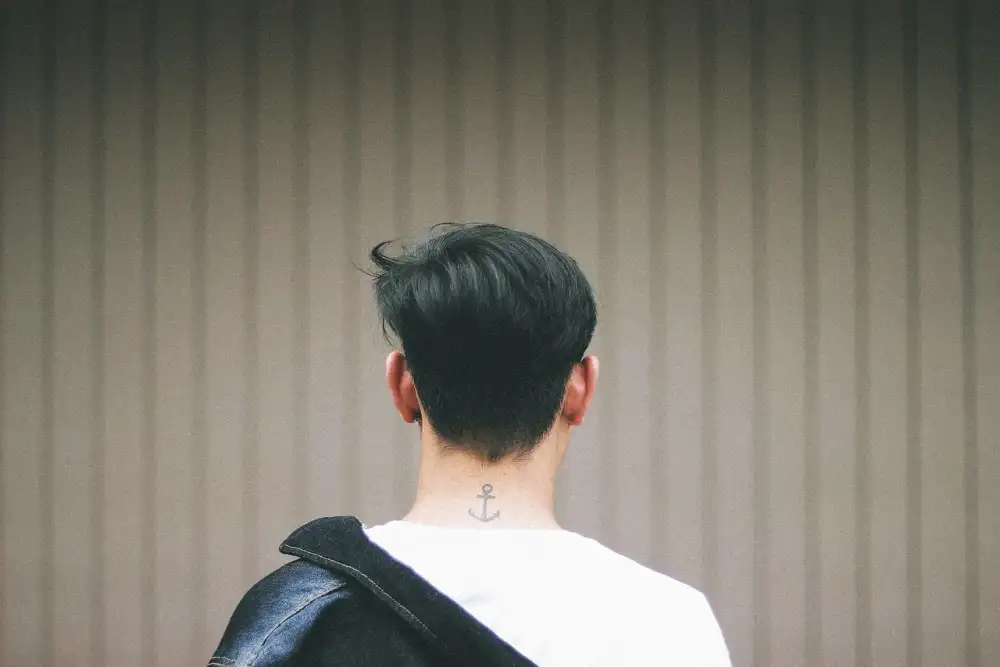Unveiling the Truth: Do Ear Tattoos Hurt? Exploring the Pain Level and Health Considerations

Ear tattoos have become increasingly popular in recent years, as people seek unique and creative ways to express themselves. However, one question that often arises is whether ear tattoos hurt. In this article, we will delve into the truth behind the pain level of ear tattoos and explore the factors that influence it. We will also discuss common sensations experienced during the process and provide tips on how to minimize discomfort. Additionally, we will touch upon the importance of aftercare for ensuring a successful healing process. So, if you're considering getting an ear tattoo but are concerned about the pain involved, read on to uncover the truth and make an informed decision.
Ear tattoos have become increasingly popular in recent years, as people seek unique and creative ways to express themselves. However, one question that often arises is whether ear tattoos hurt. In this article, we will delve into the truth behind the pain level of ear tattoos and explore the factors that influence it. We will also discuss common sensations experienced during the process and provide tips on how to minimize discomfort. Additionally, we will touch upon the importance of aftercare for ensuring a successful healing process. So, if you're considering getting an ear tattoo but are concerned about the pain involved, read on to uncover the truth and make an informed decision.
Understanding the process of ear tattoos
Understanding the process of ear tattoos is essential to determine the potential pain level and health considerations. Ear tattoos involve injecting ink into the skin of the ear using a needle or a tattoo machine. The artist carefully designs and outlines the desired image before filling it with color. The process requires precision and skill to ensure a successful outcome. It is important to choose a professional tattoo artist who follows strict hygiene practices to minimize the risk of infection or complications.
Factors influencing the pain level of ear tattoos
Factors influencing the pain level of ear tattoos can vary from person to person. One key factor is the location of the tattoo on the ear. Areas with thinner skin, such as the cartilage, tend to be more sensitive and therefore may cause more discomfort. Additionally, the size and complexity of the design can also play a role in the level of pain experienced. The skill and technique of the tattoo artist can also impact pain levels, as a more experienced artist may have a lighter touch and be able to minimize discomfort for their clients. It's important to remember that everyone's pain tolerance is different, so what might be painful for one person may not be as uncomfortable for another.
Pain perception and individual tolerance
Pain perception varies greatly among individuals, making it difficult to determine the exact level of discomfort one may experience during an ear tattoo. Factors such as age, overall health, and previous experience with tattoos can influence pain tolerance. Additionally, individual pain thresholds and psychological factors play a role in how someone perceives pain. It is important to remember that what may be painful for one person might not be the same for another.
Common sensations experienced during ear tattooing
During the process of ear tattooing, individuals commonly experience various sensations. The most common sensation is a mild to moderate stinging or burning feeling as the needle penetrates the skin. Some people also describe a vibrating or buzzing sensation due to the tattoo machine. Additionally, there may be a slight pressure or discomfort as the artist works on different areas of the ear. It's important to note that pain tolerance varies among individuals, so these sensations may differ from person to person.
Tips to minimize pain during ear tattooing
Tips to Minimize Pain During Ear Tattooing
1. Choose a professional and experienced tattoo artist: Opt for a reputable tattoo artist who specializes in ear tattoos. Their expertise and skill will ensure a smoother process, reducing the chances of unnecessary pain.
2. Numbing creams or sprays: Consider using numbing creams or sprays that contain lidocaine or benzocaine. These topical anesthetics can help numb the area and minimize discomfort during the tattooing process.
3. Take breaks if needed: If you find the pain becoming too intense, don't hesitate to ask for short breaks during the session. This will allow you to rest and gather your composure before continuing.
4. Deep breathing exercises: Practice deep breathing techniques to help relax your body and distract yourself from any discomfort you may be feeling. Inhale deeply through your nose, hold for a few seconds, and exhale slowly through your mouth.
5. Distraction techniques: Engage in activities that divert your attention away from the pain, such as listening to music, watching a movie, or engaging in conversation with the tattoo artist.
6. Stay hydrated: Drink plenty of water before getting an ear tattoo as dehydration can make you more sensitive to pain. Proper hydration helps keep your body relaxed and can reduce discomfort.
Remember, while these tips can help minimize pain during ear tattooing, it's important to consult with your tattoo artist for personalized advice based on your specific situation.
Aftercare for ear tattoos
Aftercare for ear tattoos is crucial to ensure proper healing and minimize the risk of infection. Here are some essential steps to follow:
- Keep the area clean: Gently clean the tattooed area twice a day using a mild, fragrance-free soap and lukewarm water. Avoid scrubbing or rubbing the tattoo.
- Apply an antibiotic ointment: After cleaning, apply a thin layer of antibiotic ointment recommended by your tattoo artist. This helps prevent infection and keeps the skin moisturized.
- Avoid touching or picking at the tattoo: It's important to resist the temptation to touch or pick at your ear tattoo, as this can introduce bacteria and delay healing.
- Protect from sun exposure: Shield your ear tattoo from direct sunlight during the healing process. UV rays can fade the colors and cause irritation. If necessary, use a broad-spectrum sunscreen with a high SPF.
- Avoid swimming or soaking in water: For at least two weeks after getting an ear tattoo, avoid swimming pools, hot tubs, saunas, or any activities that involve prolonged exposure to water.
- Wear loose clothing and avoid tight headwear: To prevent friction and irritation on your ear tattoo, opt for loose-fitting clothing and avoid wearing hats or headphones that put pressure on the area.
- Follow your artist's instructions: Your tattoo artist may provide specific aftercare instructions tailored to your individual needs. It's important to follow them diligently for optimal healing.
Remember that everyone's healing process is different, so if you notice any unusual symptoms such as excessive redness, swelling, pus formation, or prolonged pain, consult a healthcare professional immediately. Taking proper care of your ear tattoo will help preserve its beauty for years to come
Getting an ear tattoo can be a unique and stylish way to express oneself. While the pain level associated with ear tattoos varies from person to person, it is generally considered to be less painful compared to other body parts. Factors such as individual pain tolerance, the skill of the tattoo artist, and aftercare play a significant role in minimizing discomfort during and after the process. By following proper aftercare instructions and seeking professional advice, individuals can ensure a safe and successful ear tattoo experience. Remember, always prioritize your health and consult with a reputable tattoo artist before making any decisions.
Published: 26. 02. 2024
Category: Health



